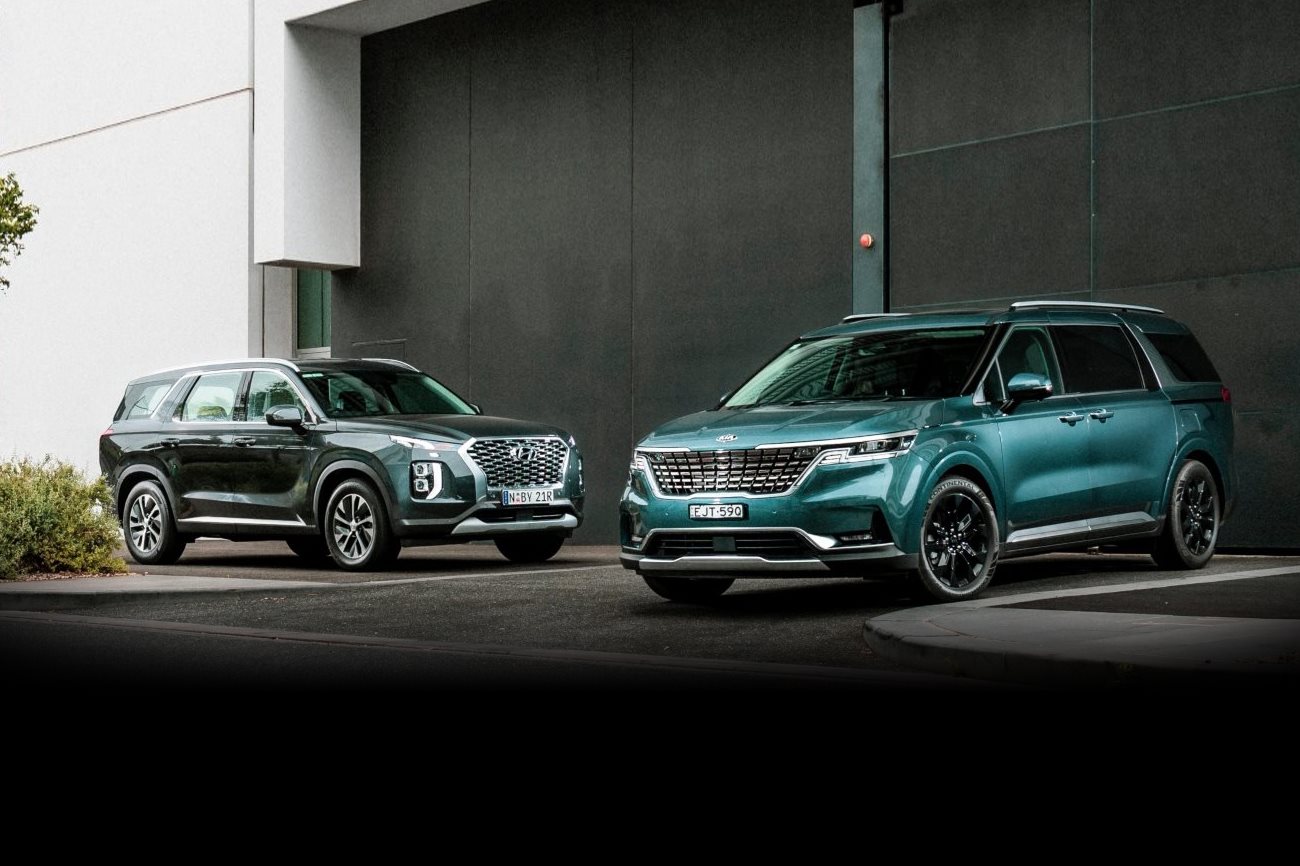
Perhaps ‘battle’ is the wrong word. If you were hoping for a contest between two vicious power players in a haze of tyre fog and singing V8s, then I’m afraid you are going to be disappointed. However, this fight is still between two intriguing machines that are undeniably mighty in their own way.
At five metres long and 1.75m tall, Hyundai’s new Palisade is big and imposing but still trumped by the Kia Carnival which measures 5.2m in length and tops the Hyundai’s height by 25mm, towering at 1775mm.
And, in both cases, the epic exterior proportions of this South Korean pair translate to cavernous cabins on the inside, enabling the unique selling proposition offered by both models – eight seats.
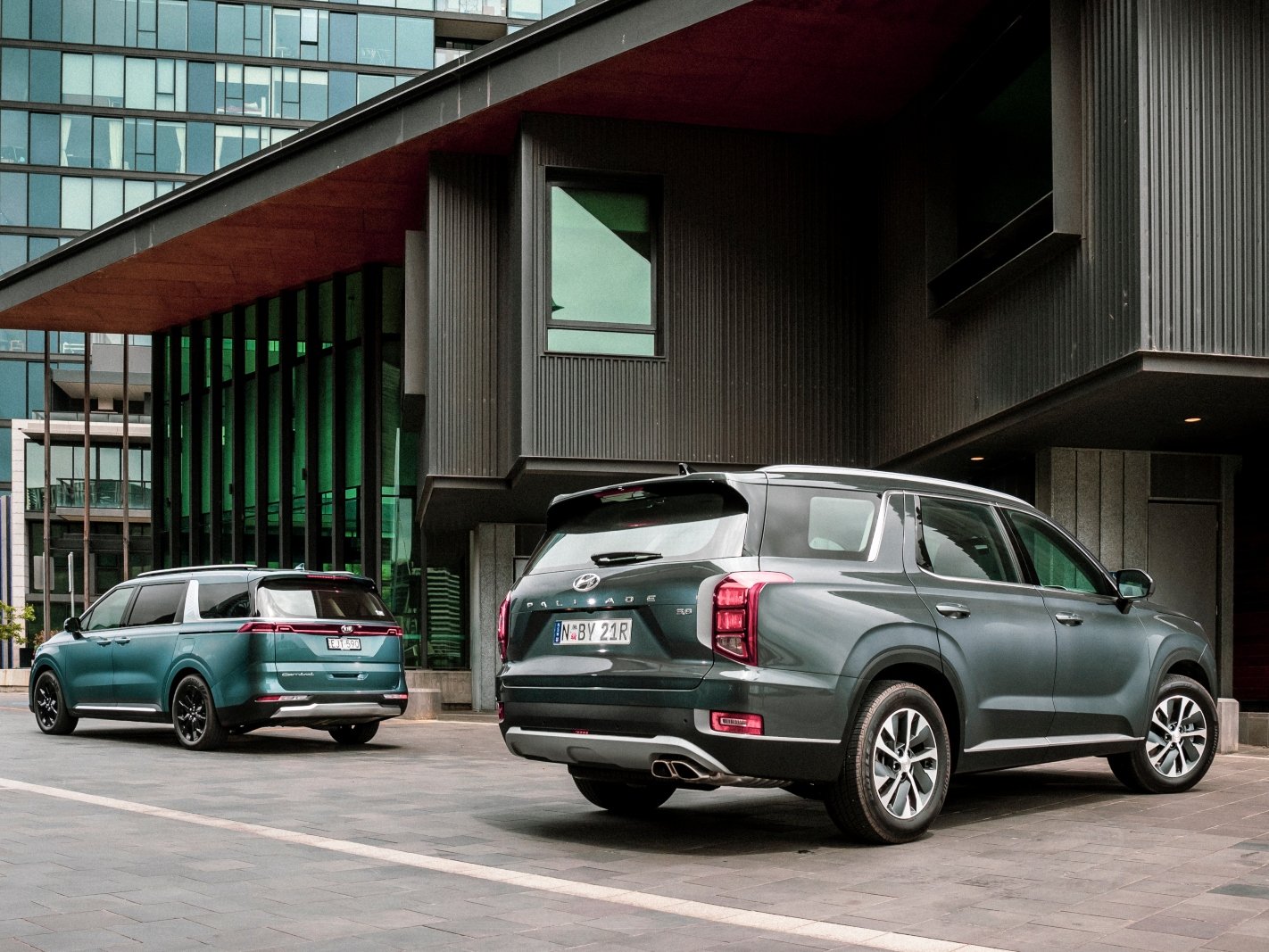
For this comparison, we lined up the top-shelf Carnival Platinum and the entry level Palisade which means the two models also align on approximate pricing and powertrains, with a V6 petrol driving the front wheels with the same amount of power and torque.
Dig a little deeper and you’ll find a few other family resemblances in technology and shared parts but beyond that, the Kia Carnival and Hyundai Palisade are very different.
In Australia’s SUV-centric market, it’s likely more large families will give the high-riding Palisade their attention compared with the Carnival but, on paper at least, the Kia appears to offer much more for less cash.
If you need to ferry a lot people or things, have a $60,000-odd budget and can’t stand the notion of driving a passengerised van, which eight-seater is the pick?

Space is, of course, key in this specialised niche of the car world and while both models offer a lot of volume, one is a clear leader in outright quantity and the way it makes use of space.
Simply speaking, the Palisade has a 704-litre boot with the third row of seats folded away and even with the rearmost bench in use offers a respectable 311-litre boot.
Fold both second- and third-row seats flat and the Hyundai’s cabin opens up to accommodate a whopping 2447 litres of stuff.
Whopping – until the Kia brags about its cargo capabilities.
With all eight seats in place, the Carnival still offers 627 litres of space – the same as a Skoda Kodiaq in five-seat mode. Stow all the seats and it’ll swallow 2785 litres.
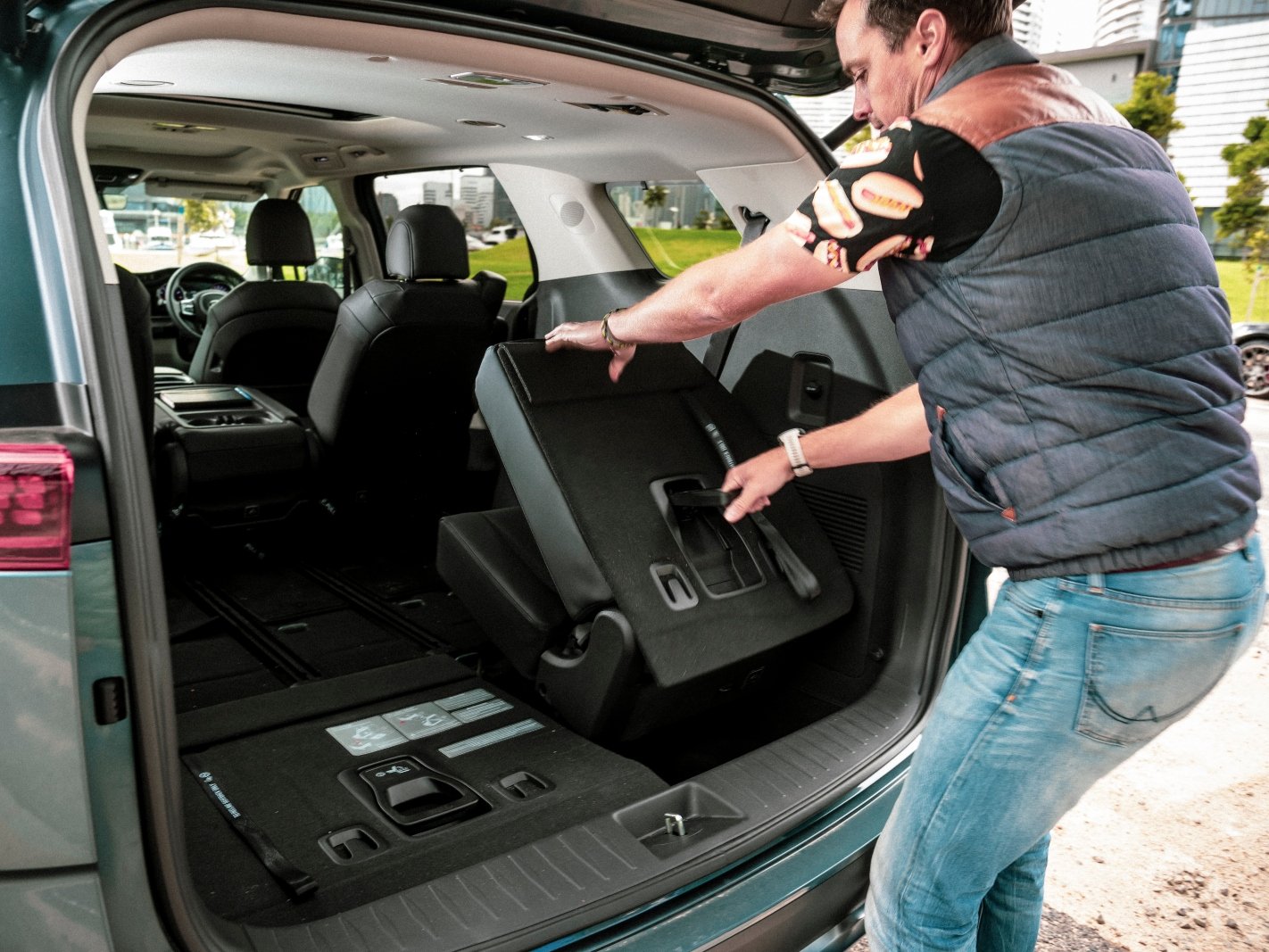
Those impressive figures are made possible in part by some seriously clever use of space, including huge wells in the boot floor.
The voids are filled by the third-row seating which ingeniously hinges and pivots down into place and also results in a flat boot floor for more versatile loading.
Hardly any other vehicles can pull the same trick as the spare wheel and exhaust system typically occupy the under-boot space, but Kia’s engineers relocated the items under the Carnival’s floor in the middle of its body.
And while the Palisade has more conventional doors and tailgate, the rear space of the Carnival is accessed through power sliding doors which allow easier access in tight spaces as well as a larger aperture when open.
The only downside is the mechanism robs a little interior space.
Neither car feels exactly claustrophobic inside however. Second row seating in both has as much space as the front row and, even out back, the passenger space is surprisingly generous.
It’s not quite business class and we would feel a little guilty about putting adult passengers in the third row for long trips but children will be quite happy in both vehicles, even if you slot them in three-wide for shorter trips.
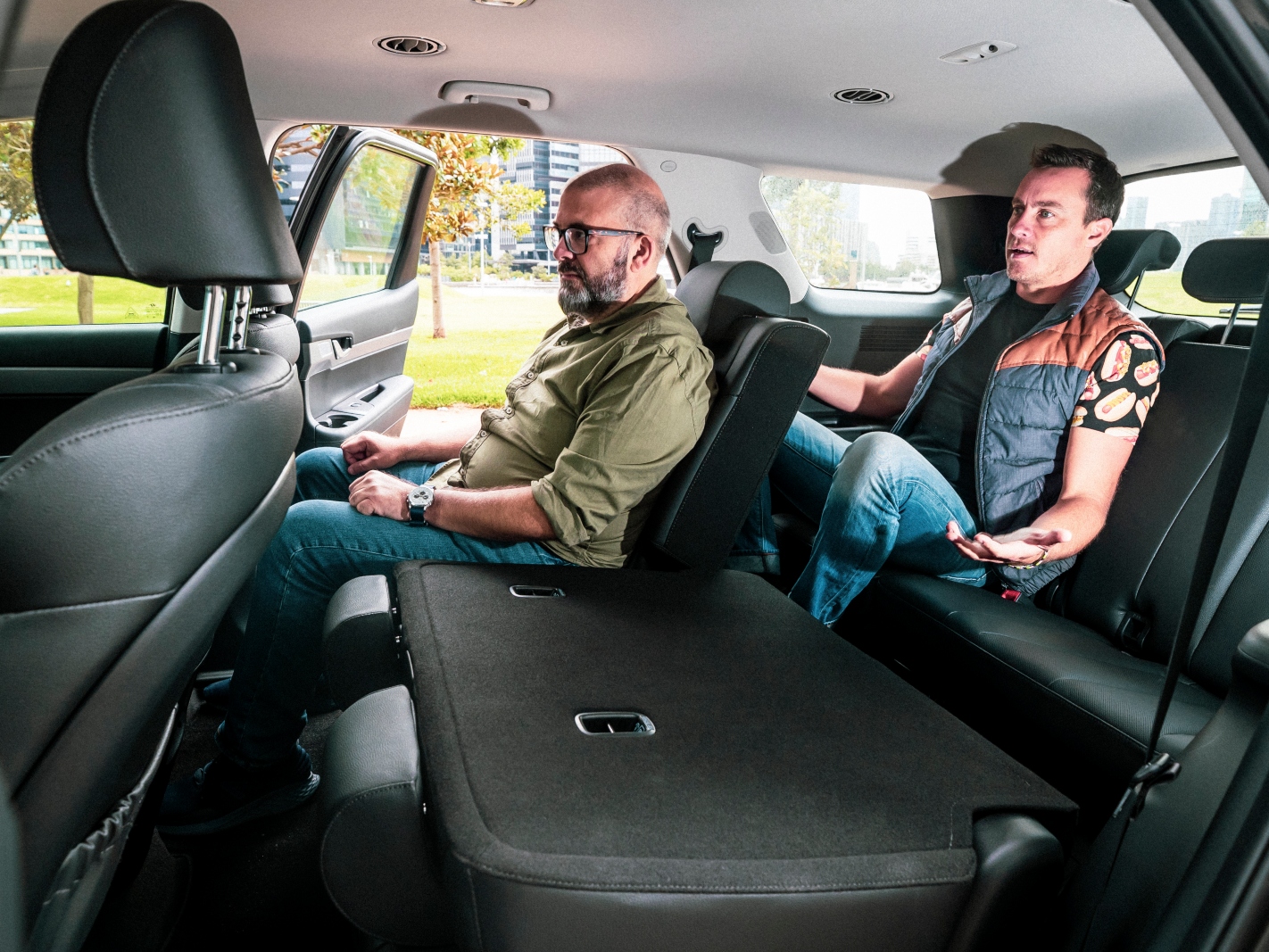
Both the Kia and the Hyundai offer the rear passengers air vents, cup holders and lighting but the Carnival goes a little further with side window sun shades and more generous headroom.
The Carnival, however, has a few tricks over the Palisade in this price bracket when it comes to the second row.
Splash a bit more cash and Hyundai will sell you the Palisade Highlander which has a smart pair of captain’s chairs and a few more luxuries but it doesn’t fit a circa-$60k budget.
Priced from $64,680 the Carnival is in the highest Platinum grade of the range and that means all the extras Kia can offer. Second row passengers get heated and cooled seats, a neat climate control panel mounted on the driver’s side of the roof lining and electrically adjustable seats.
They’re not quite the full captain’s chairs offered by a $71,000 Palisade Highlander, but if you’re handy with catches and latches, you can remove the centre seat for a similar effect.
The Kia’s interior seating is also reconfigurable for different layouts.
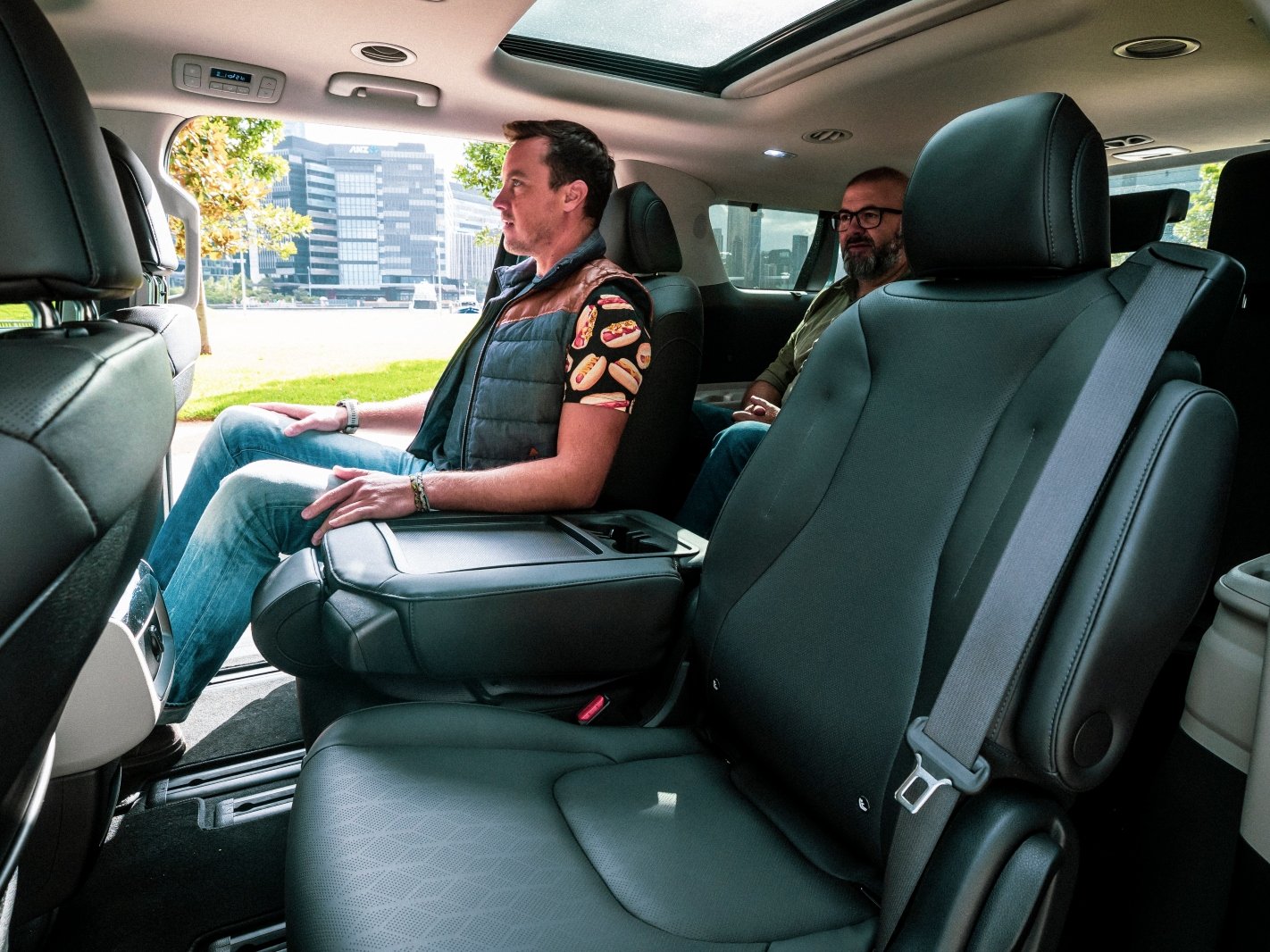
Both the Kia and the Palisade offer eight genuinely useable seats with a third row that is more inviting than almost all seven-seat models available, but with its extra luxury features the Kia is the more limo-like of the two.
It’s a similar story in the front row, too, with standard levels of equipment generally high for both. Indeed Kia and Hyundai were clearly picking technology from the same shelves in many cases.
The central 10.3-inch touchscreen and dash cluster with digital driver’s information display are largely the same, as are many of the features contained within.
Smartphone mirroring will keep occupants of both models happy while Kia gets an extra point for wireless device charging.
We particularly liked the antique valve-amplifier graphics when tuning different radio stations and, while the selection of relaxation background soundtracks initially seemed a bit of a gimmick, the soothing rainforest sounds were still playing 30 minutes later. Warning though – the raindrop option will make you want to pee and the snow footsteps track is a bit creepy.
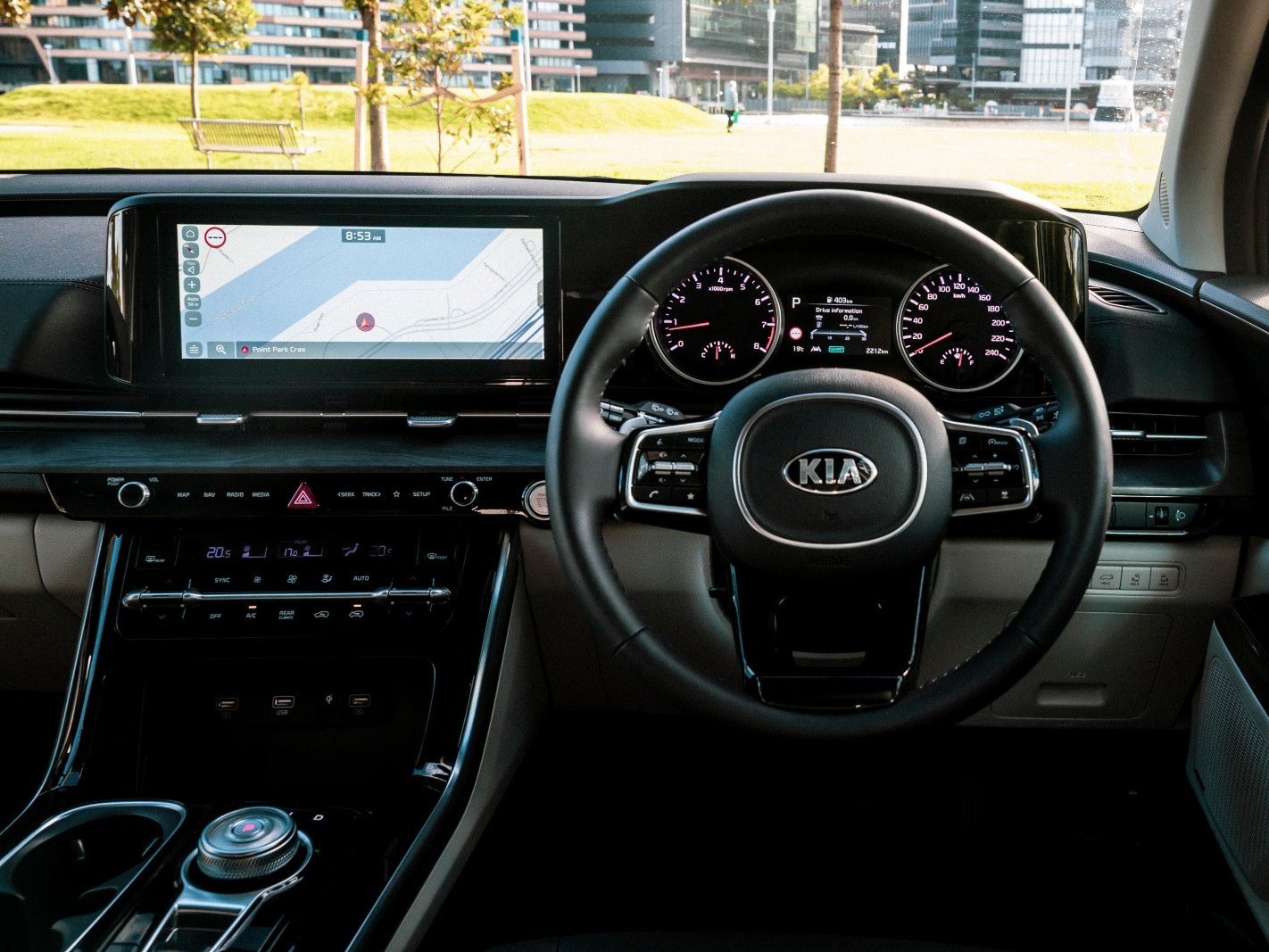
Well-finished part-leather upholstery and quality materials are common to both the Kia and Hyundai, although subtle touches such as solid-state gloss black switches and more premium finishes elevate the Kia cabin above the Palisade’s interior. The Kia also gets seat heaters and ventilation in the front row as well as a heated steering wheel.
The Hyundai wins back recognition for a more car-like driving position though. It’s not that the Carnival offers an unpleasant place for the driver, but it certainly feels more commercial.
Slotting behind the wheel of the Palisade is more immersive with a cozier feeling surrounded by the pleasantly finished interior touches.
We particularly like the flying-buttress-style centre console which places all the climate control and transmission selector switchgear close to hand but allows lots of storage space underneath and out of the way.
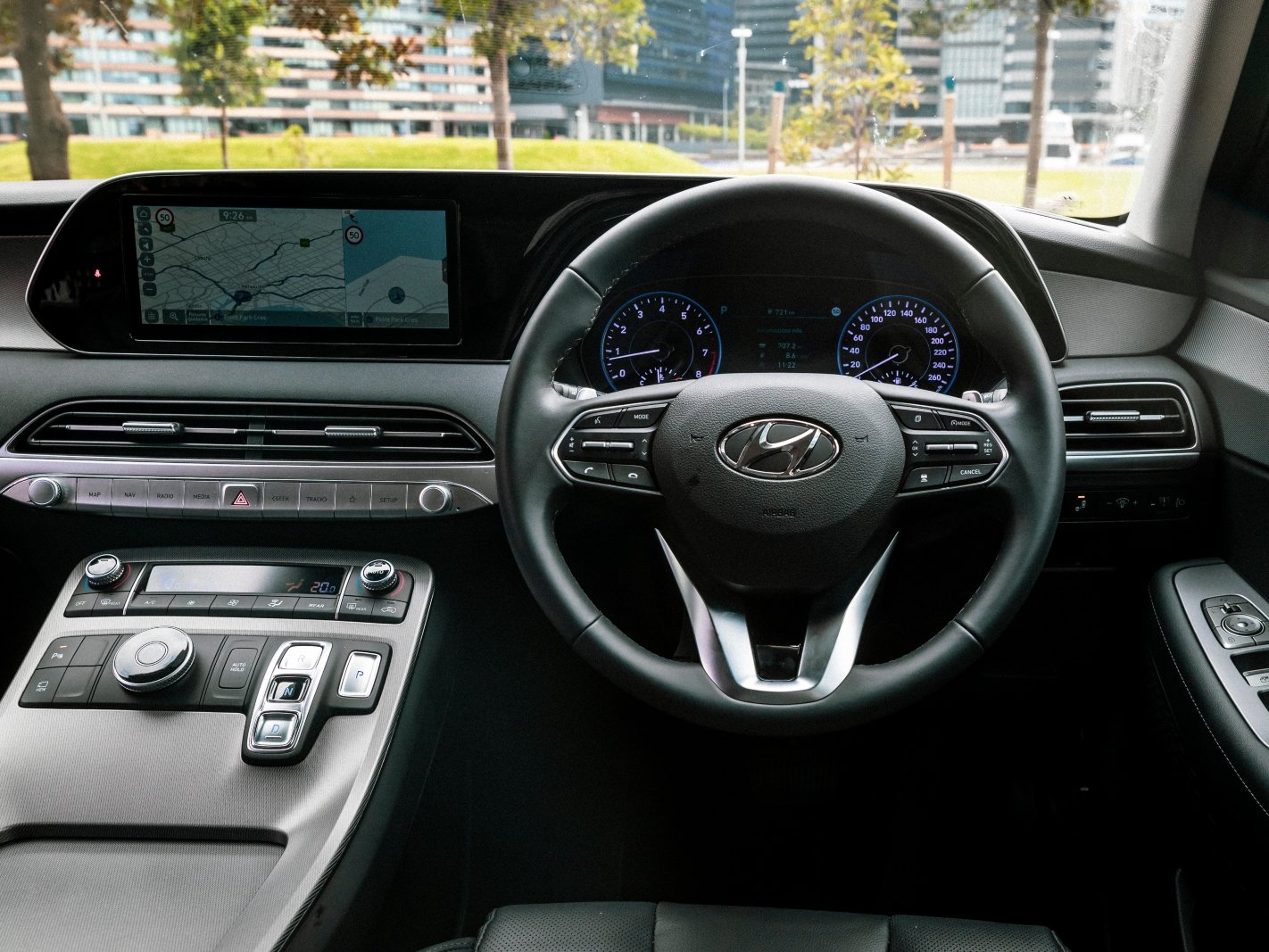
Both cars have somewhat unorthodox gear selectors. In the Kia, it’s a cool looking knurled dial that’s rotated to the required drive mode.
In the Hyundai, a button is pushed in a similar fashion to the Ioniq electrified sedans. In practice, the simple buttons feel more intuitive and urgent when you need to maneuver quickly.
They are connected to an eight-speed automatic transmission that in turn sends power from the naturally aspirated V6 petrol engine to the front wheels only.
Even though the Palisade can brag a 3.8-litre version of the engine compared with the 3.5-litre Carnival, both produce almost identical outputs.
Maximum torque is 355Nm in both cases and 216kW for the Carnival vs 217kW from the Palisade V6. Despite their bulk, both manage respectable performance with strong in-gear acceleration, smooth power delivery and a pleasing note.
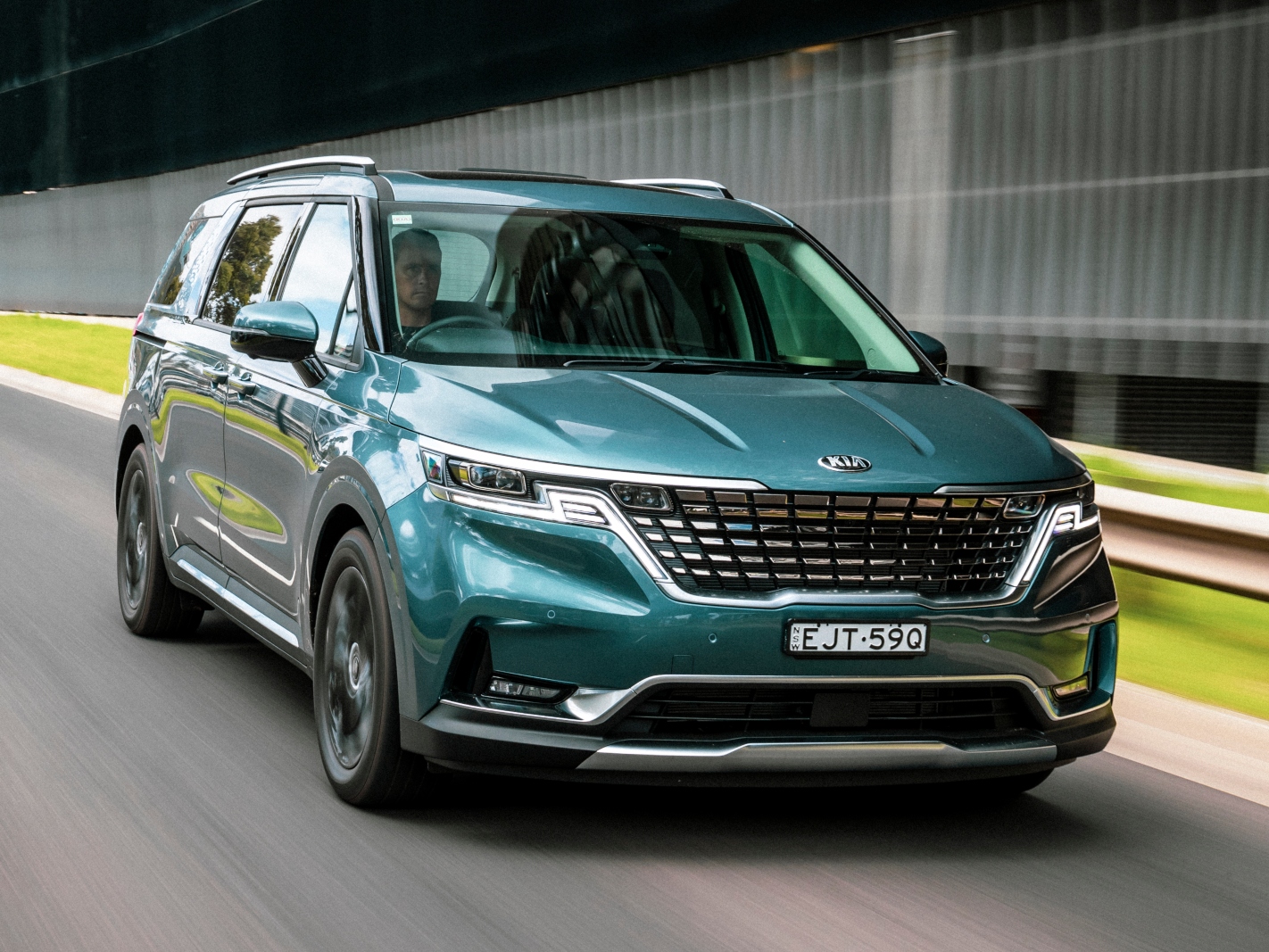
Unfortunately, muscular torque low in the rev range, combined with the inertia of a two-tonne vehicle and only front-wheel drive causes some significant traction shortcomings for both the Kia and the Hyundai.
In dry weather the front wheels chirp and squeal embarrassingly even when trying to pull away moderately fast and in the wet the problem is magnified with traction control cutting in annoyingly early to minimise wheelspin, but shutting off any meaningful acceleration in the process.
While some may regard the Palisade’s AWD option an unnecessary luxury for about town use, our preference would be for four-wheel traction in all driving conditions. Worse still, the Carnival is not offered with the AWD transmission.
Once you are able to get both beasts rolling, there is a more enjoyable driving experience to be had. The Carnival’s cabin is easily the smoothest with a suspension tune that insulates all occupants from the rigours of the outside world.
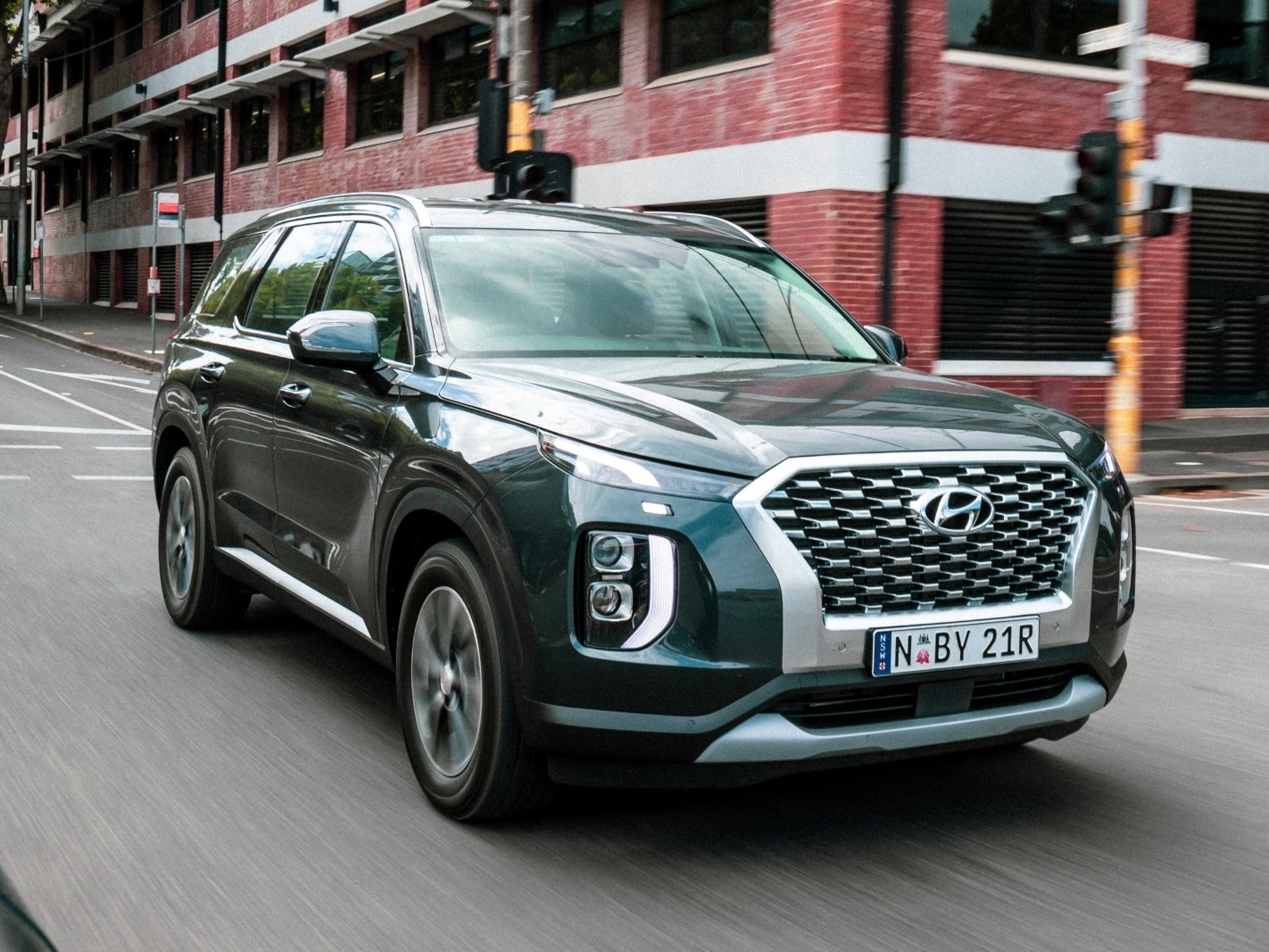
But there’s less enjoyment to be found behind the wheel. Excessively light steering feels disconnected from the road, a noticeably longer wheelbase compared with the Palisade requires a more bus-like approach to corners and the flatter seats are sat on, not in.
Even though the Carnival looks and feels nothing like a van from the outside and passenger seats, it’s a little more commercial in the driver’s seat.
Surprisingly, the Palisade is the driver’s pick. Even though it has a firmer and more utilitarian ride as well as more body roll from taller suspension, the big SUV has a more responsive and eager nature.
The ride quality is still high and cabin noise is minimal but the Palisade is certainly the more rewarding of the two to drive.
That’s all the more surprising when you consider the Palisade is the only Hyundai that doesn’t have suspension tuned by the company’s local chassis outfit.
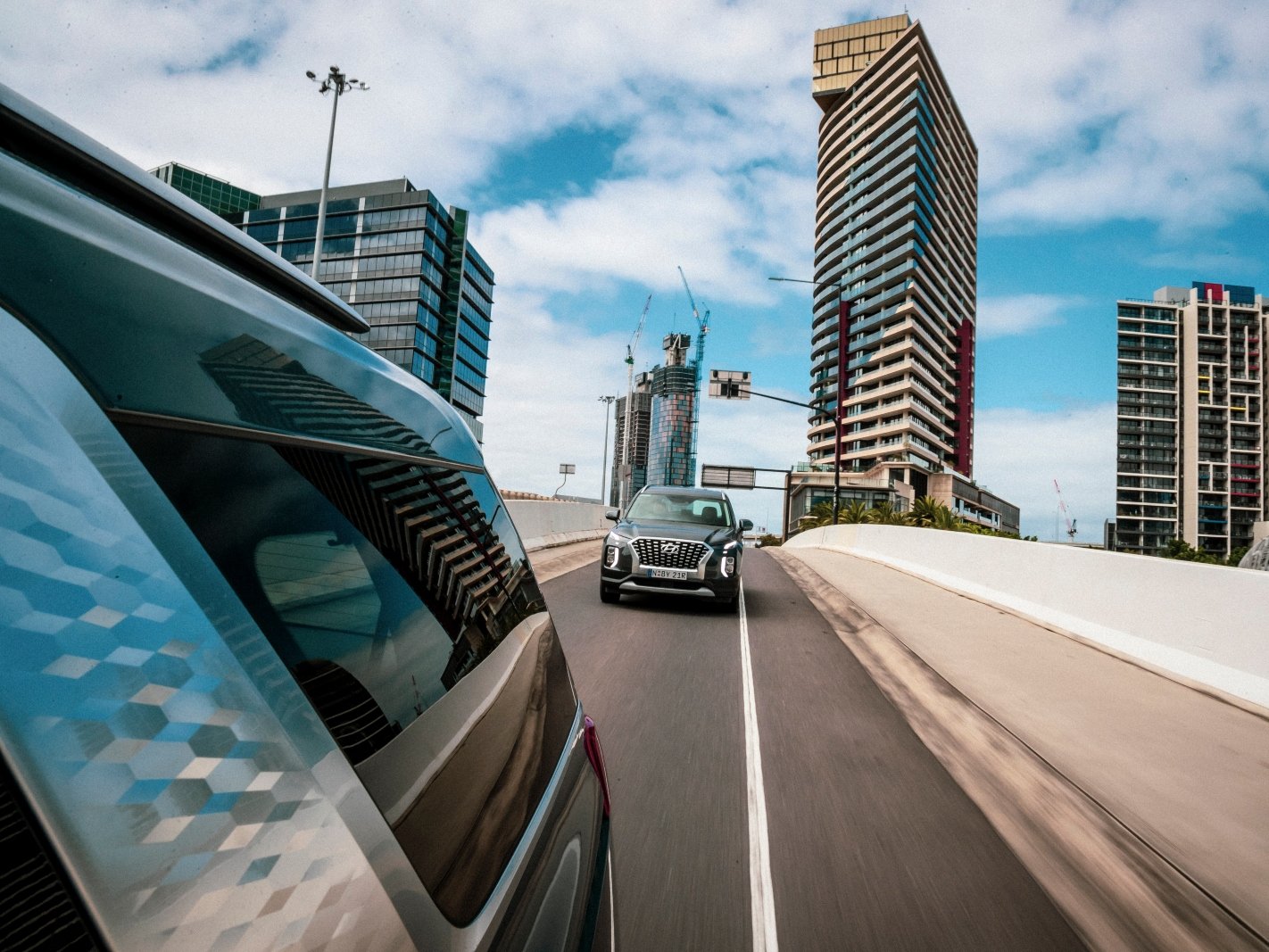
Those drivers who prefer large SUVs for the more commanding position they offer over smaller vehicles should not discount the Carnival.
With a similar overall height, the Kia offers excellent visibility of the surroundings and both have tall glazing for a panoramic view for all passengers.
If you want an eight-seater that is kindest to the driver with more rewarding dynamics and driving position, the Palisade delivers a surprisingly good combination of ride and handling, but if it’s all about your passengers, with the most space all round and more comfort features, the Carnival is the model that will keep everyone the happiest.

With its SUV proportions and chunky tyres Hyundai’s new flagship may have a greater perceived value over the more people-movery Kia, but unless you wade into diesel all-wheel drive territory that’s somewhat of an illusion.
At the same time, Kia says its Carnival is “SUV Inspired” but that probably doesn’t do it justice. It’s precisely because the Carnival isn’t trying to be something it is not that makes it stand out with confidence.
Even with a worthy new adversary on the scene and the strong-performing Palisade, the incredibly complete Kia Carnival is still the master of mass moving.
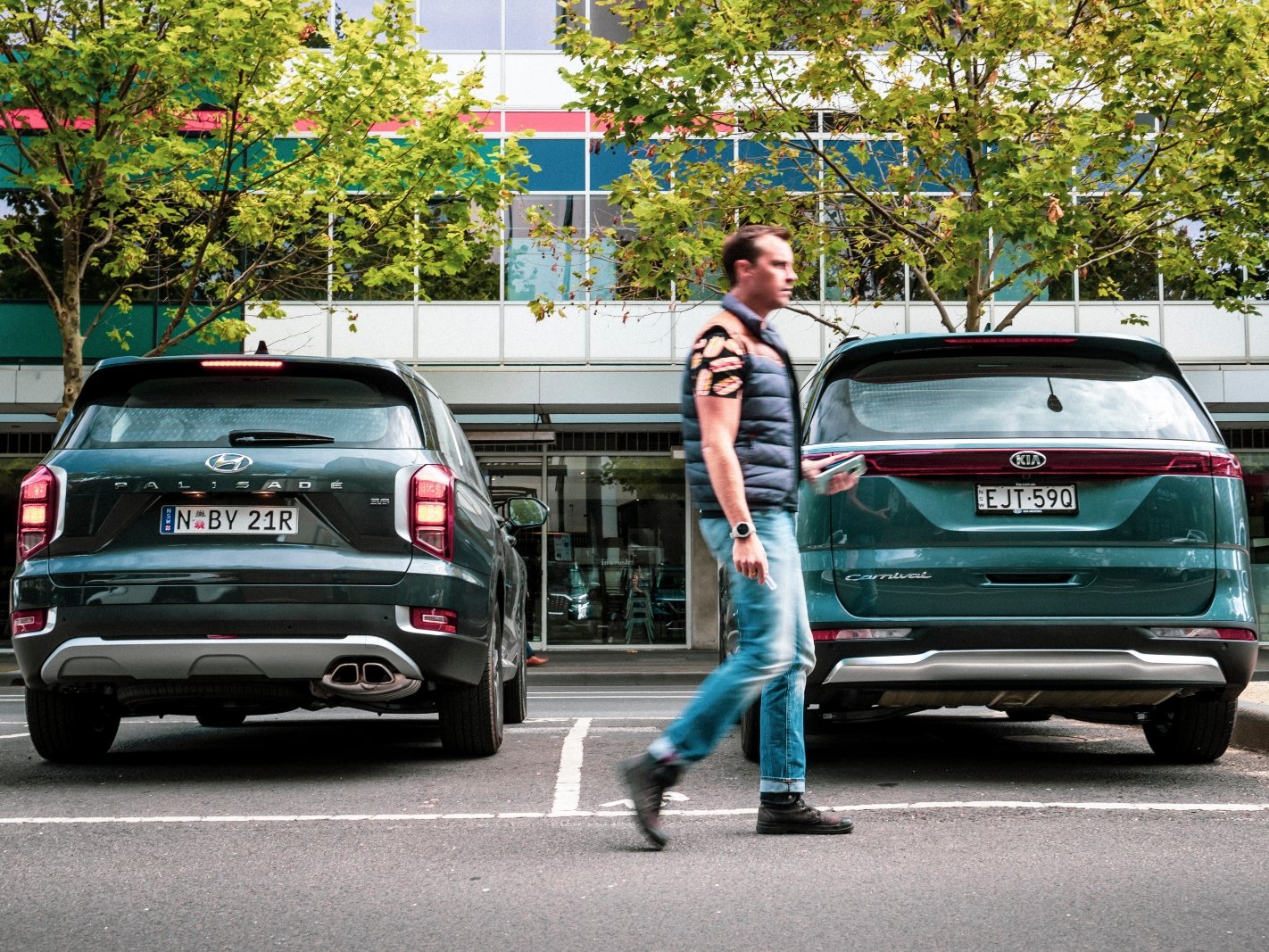
SPECS
Model Hyundai Palisade Engine 3778cc V6, 24v Max power 217kW @ 6000 rpm Max torque 355Nm @ 5200 rpm Transmission 8-speed auto Weight 1897kg Economy 10.7L/100km Price $60,000 On sale now RATING 4/5
Model Kia Carnival Platinum Engine 3470cc V6, 24v Max power 216kW Max torque 355Nm Transmission 8-speed auto Weight 2136kg Economy 9.6L/100km Price $53,330 On sale now RATING 4.5/5




